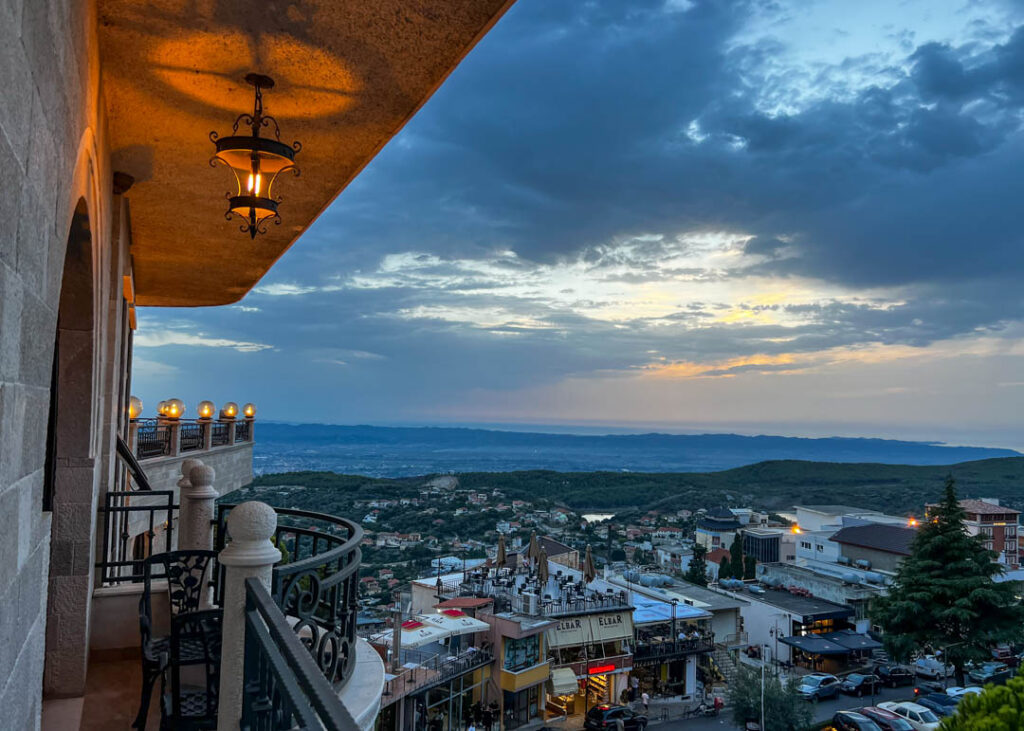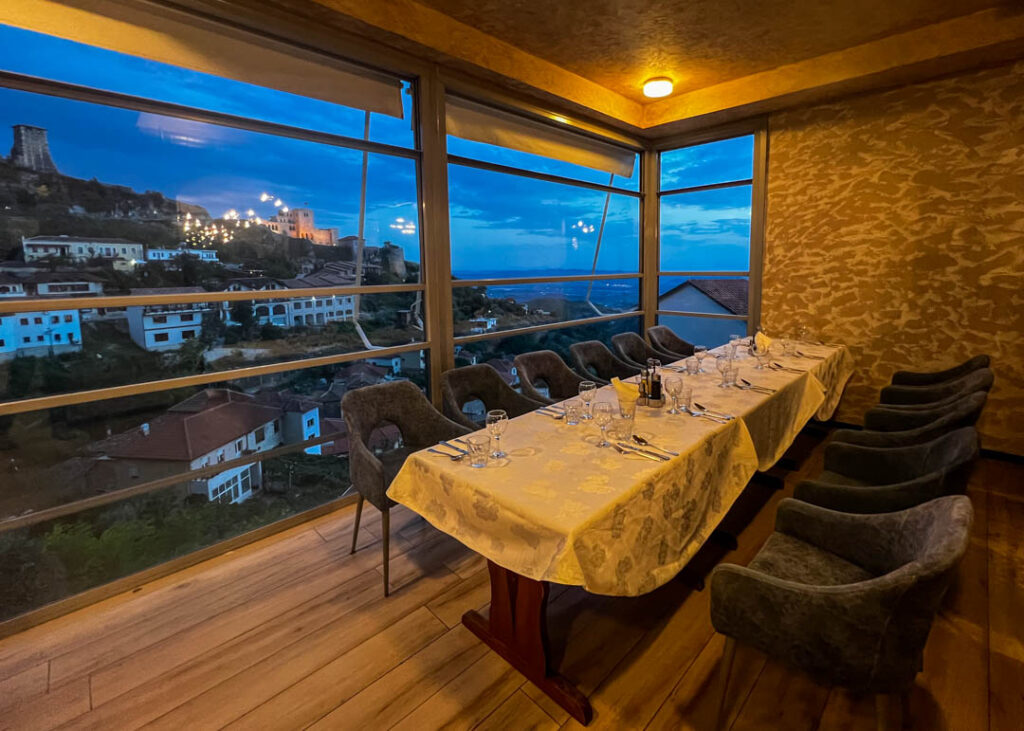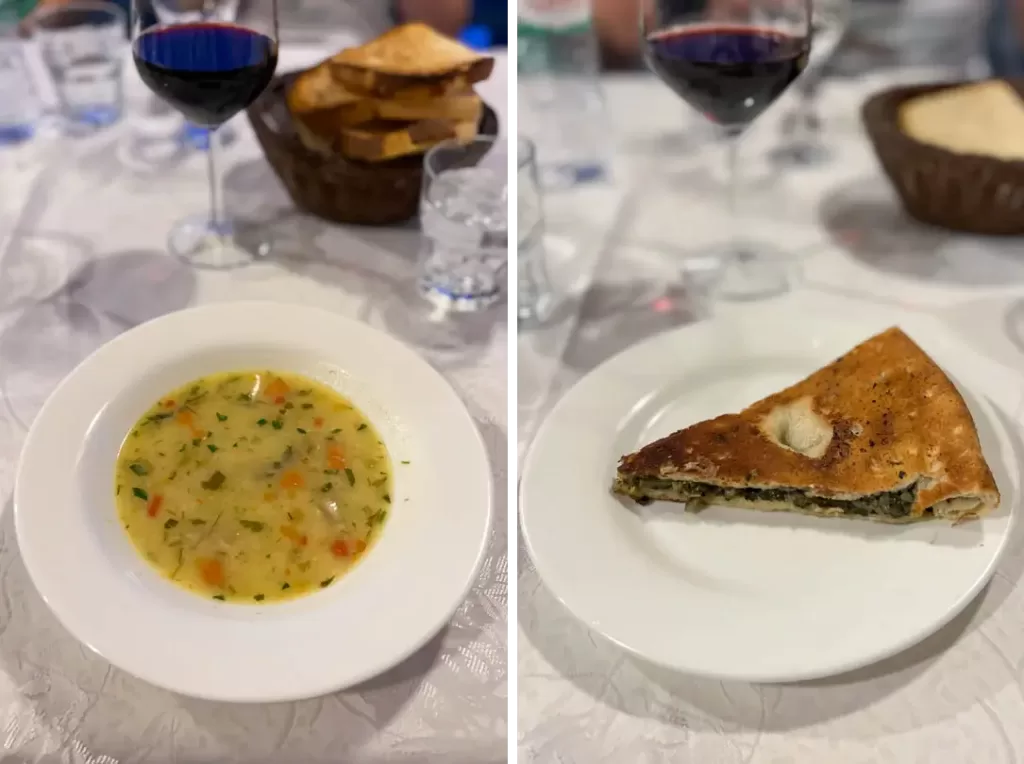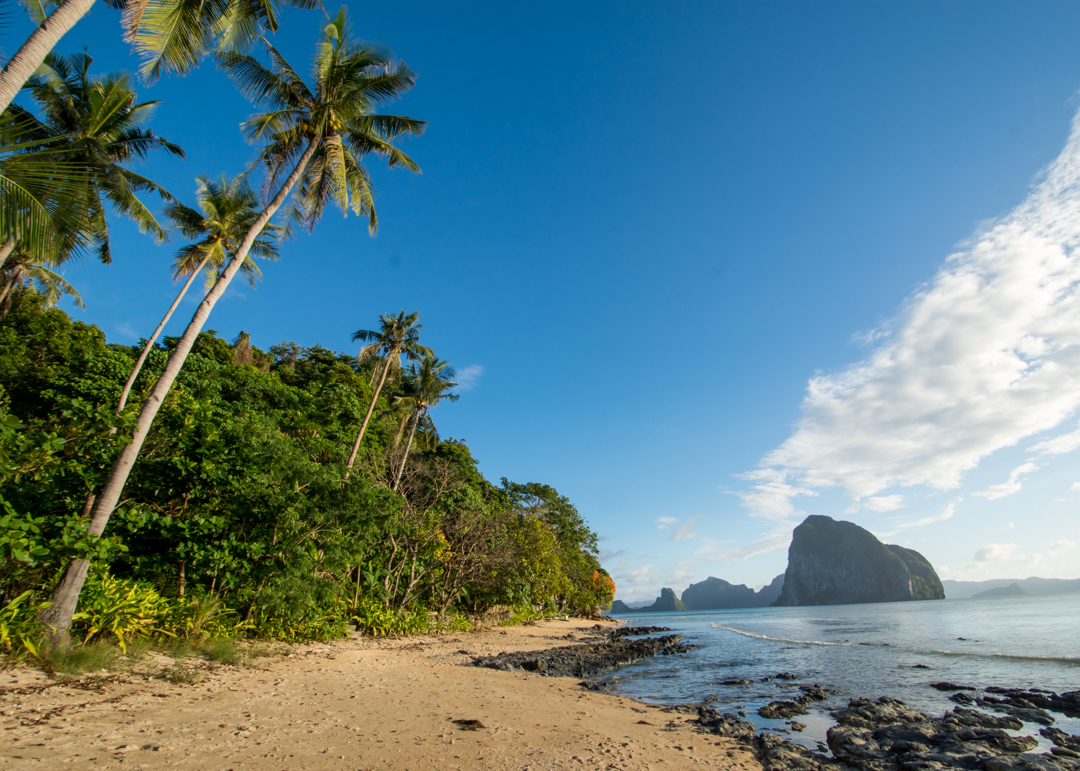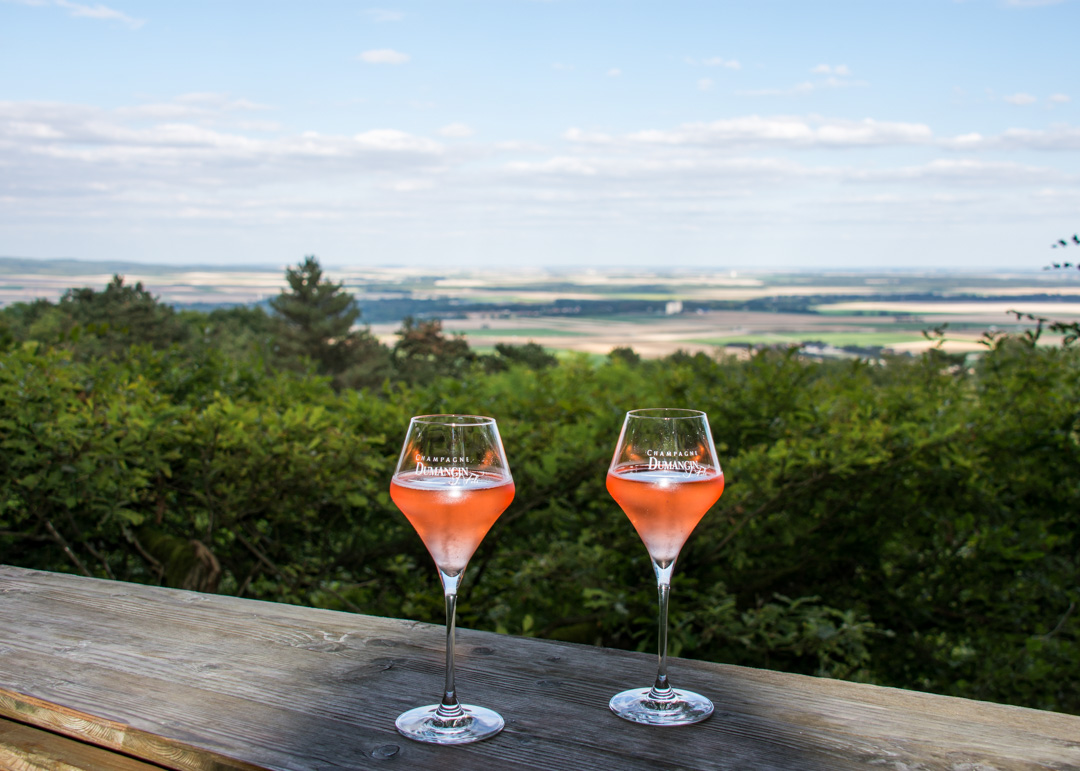Leaving the village of Theth behind, we followed the crystalline river Shala through the lush Grunasi canyon at a leisurely pace.
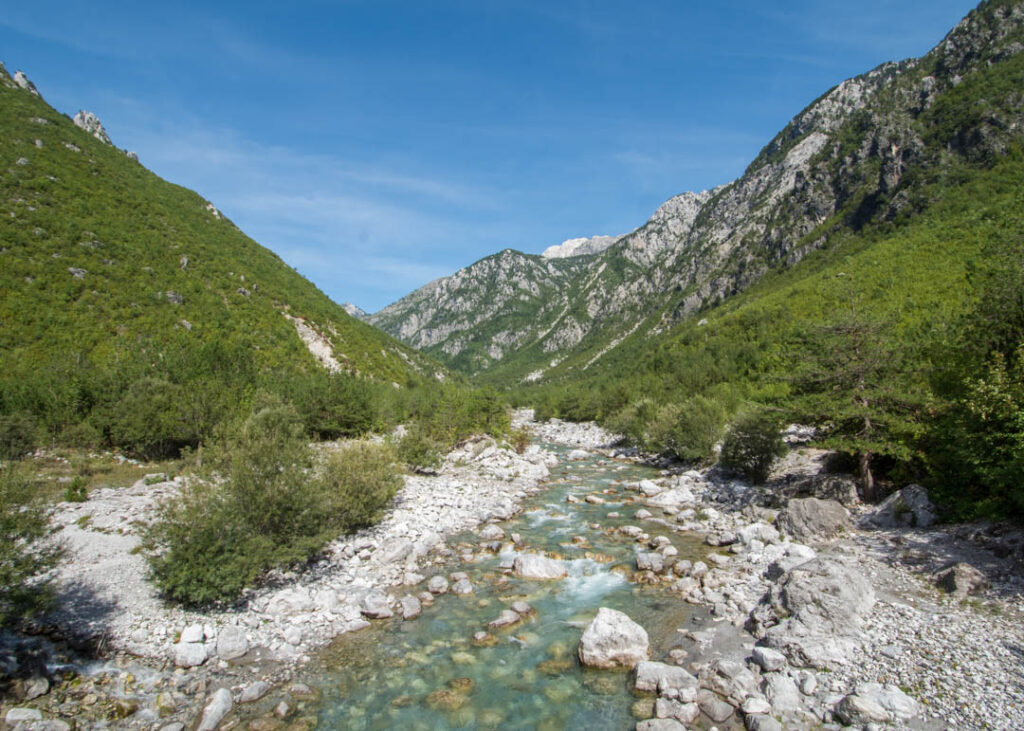
Grateful for the easier grade than in previous days, we crisscrossed the riverbed looking for berries and the perfect shaded spot for a mid-morning picnic.
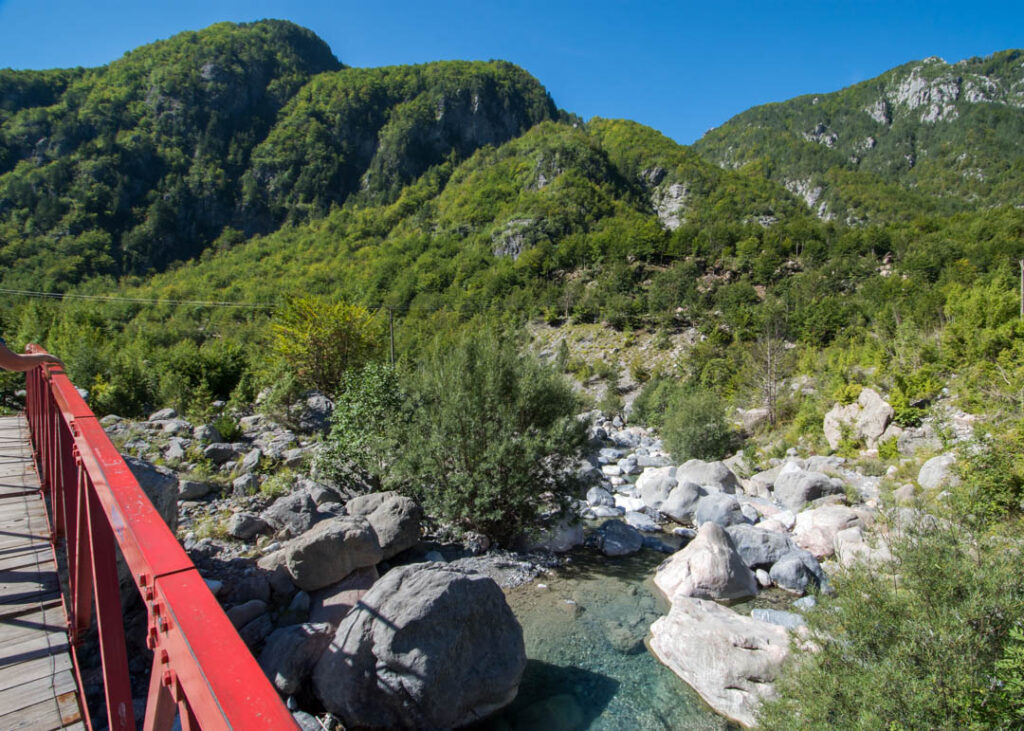
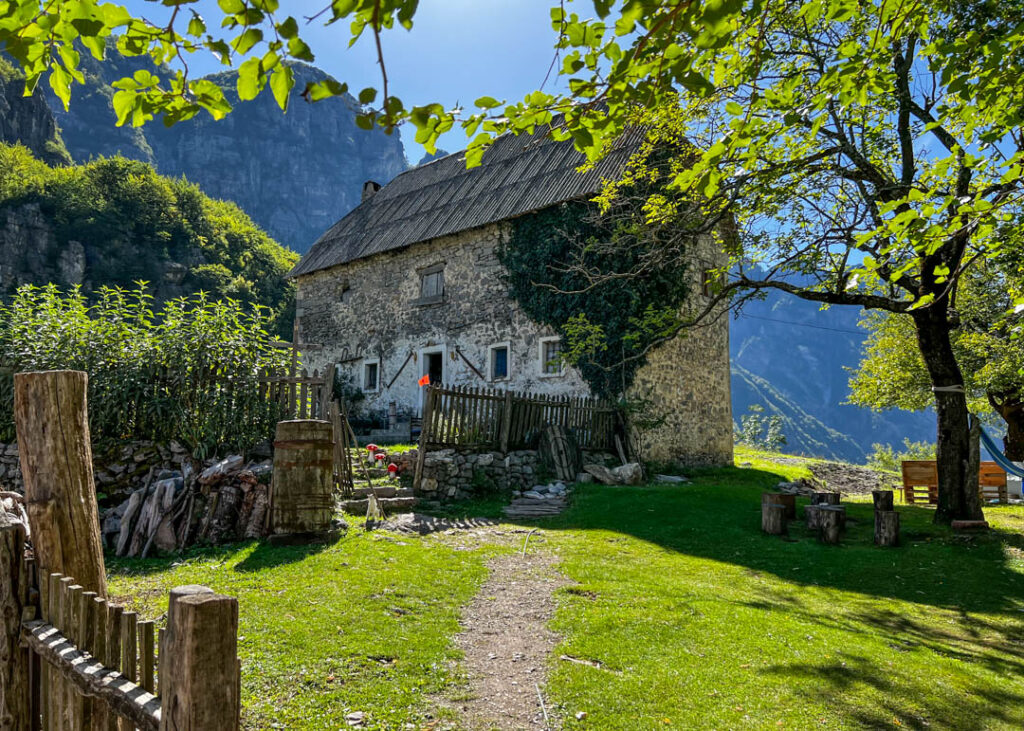
A little climb up brought us to Grunas Waterfall (or Theth Waterfall as it’s sometimes called) – a 30m high waterfall fed almost exclusively by the melted snow coming from the mountaintops.
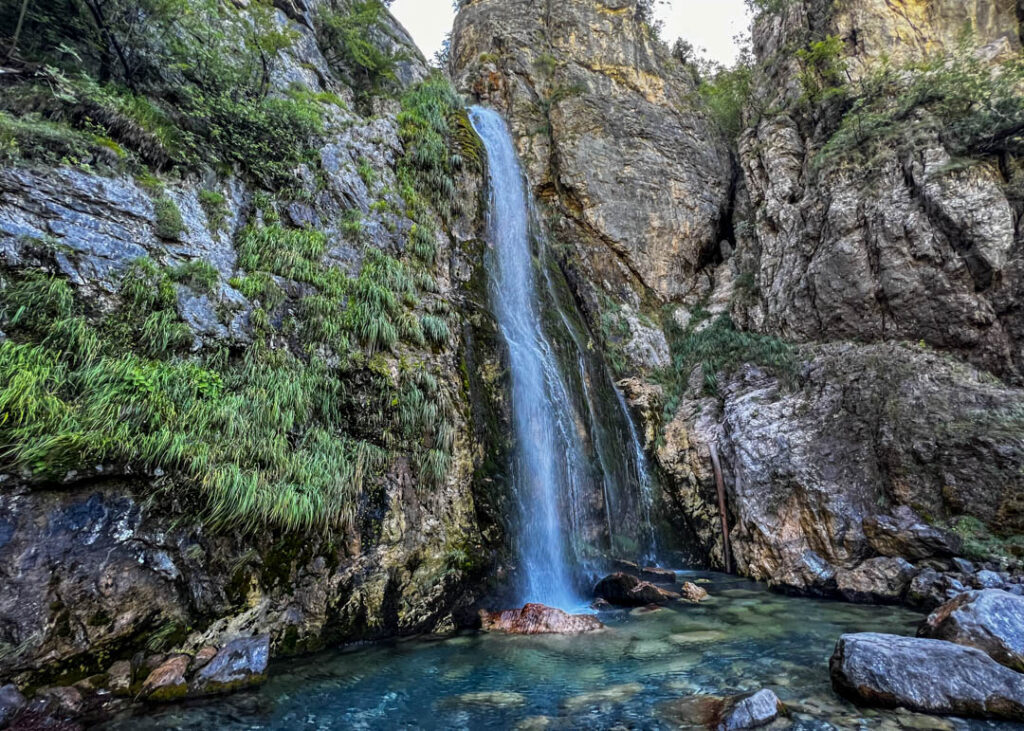
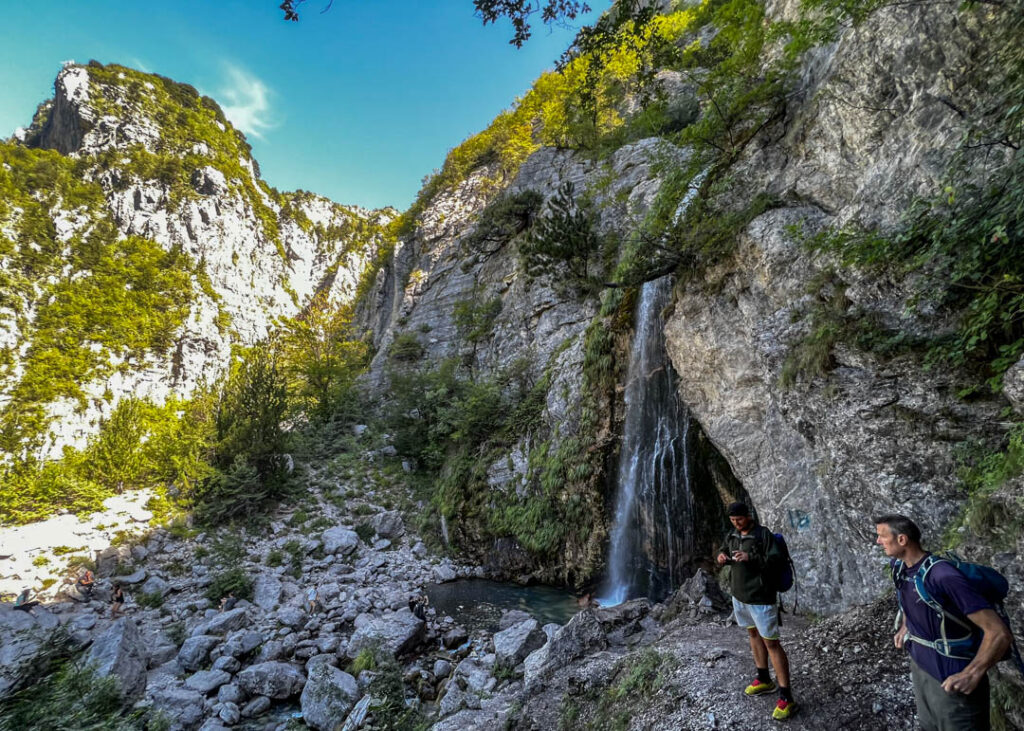
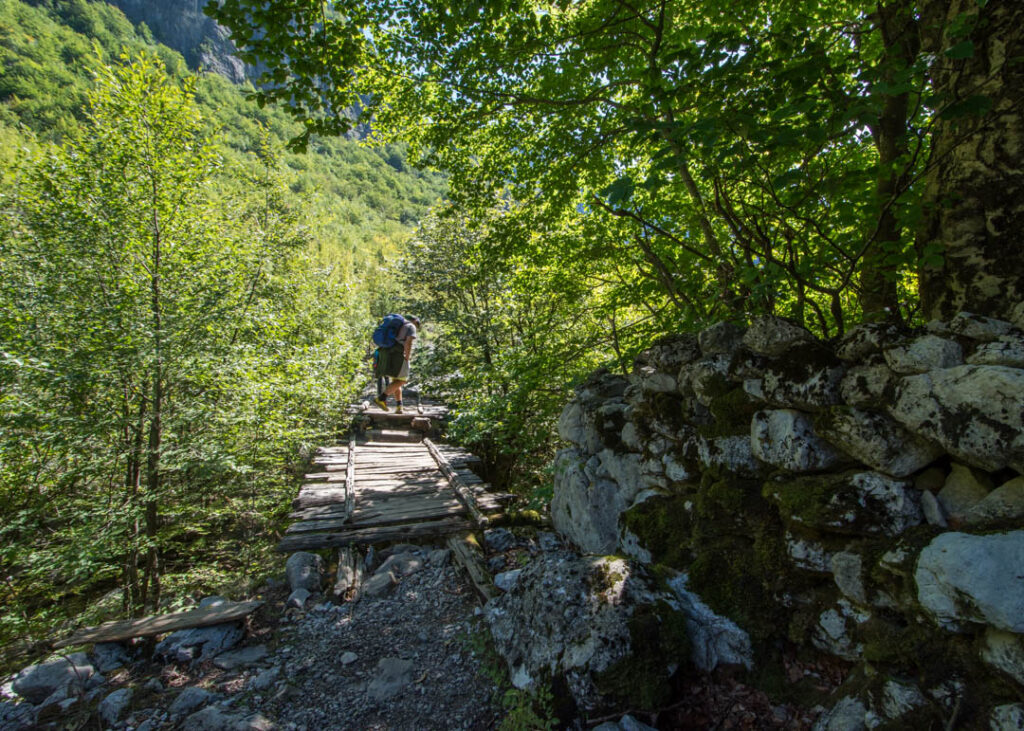
A bit further, a wooden bridge slightly off the hiking trail gave us a nice view over the deep, turquoise canyon.
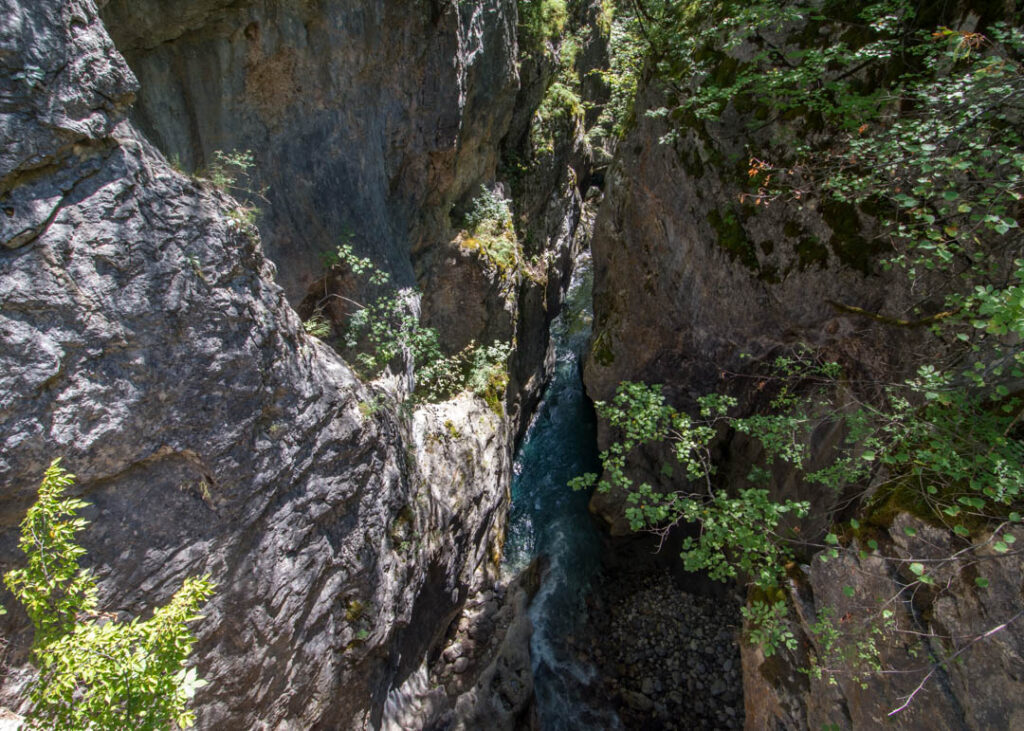
Back in the open, the valley laid out at our feet, the sun beating down on us… what a marvel to be here and not have to share this superb “day of rest” with anybody else? Incredible that you can still find pockets of solitude in such formidable nature.
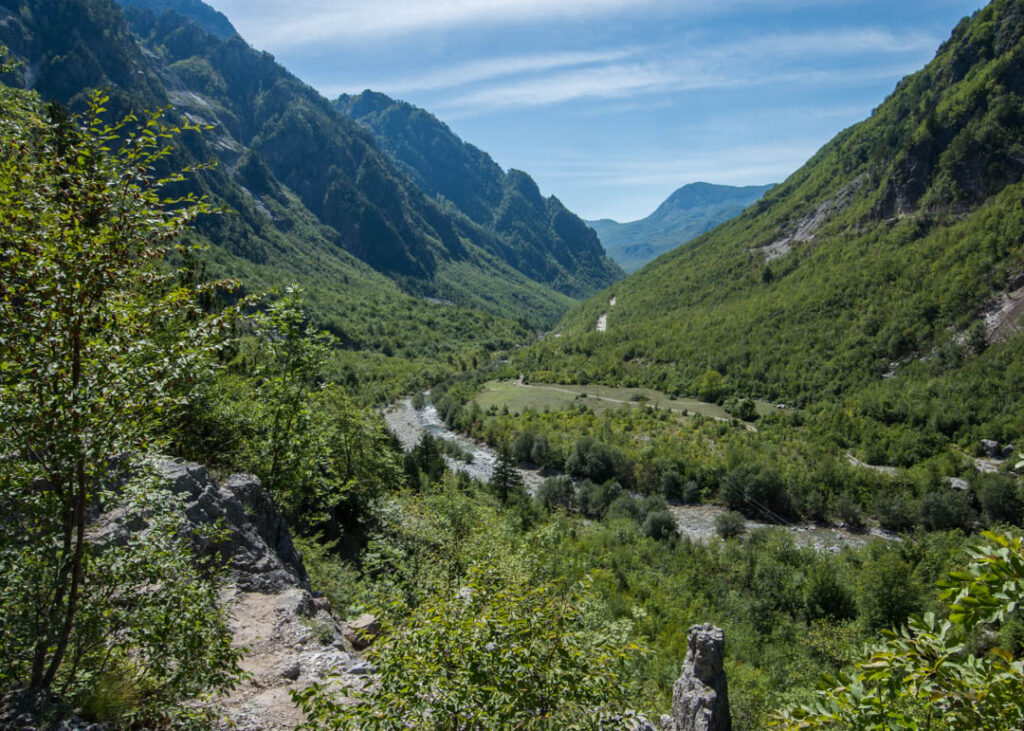
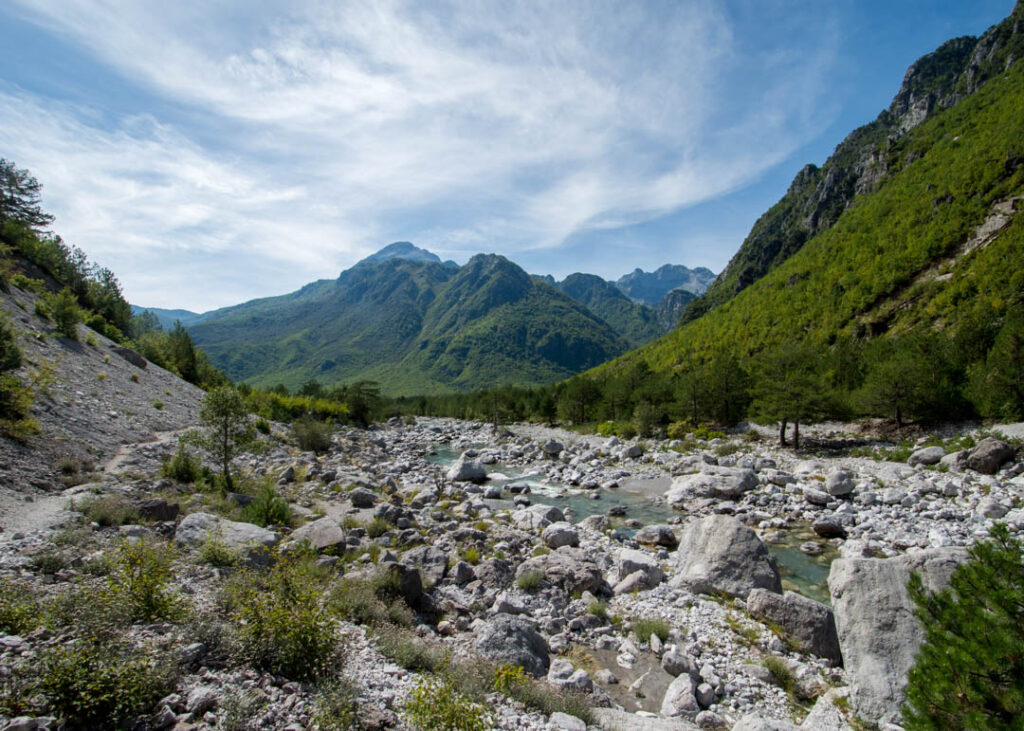
We couldn’t stay away any longer from the enchanting blue of the tranquil river and its healing promise. We scrambled down and quickly took off bulky hiking boots and wool socks, filling the quiet valley with our screams of ecstasy as the glacial water soothed our achy feet…
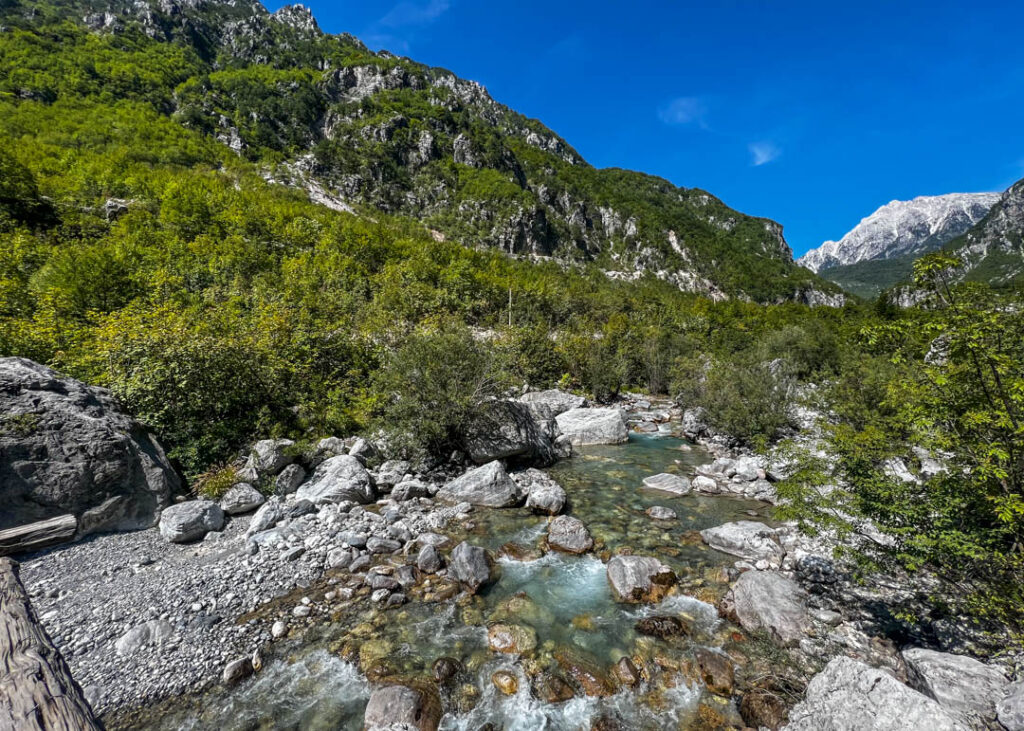
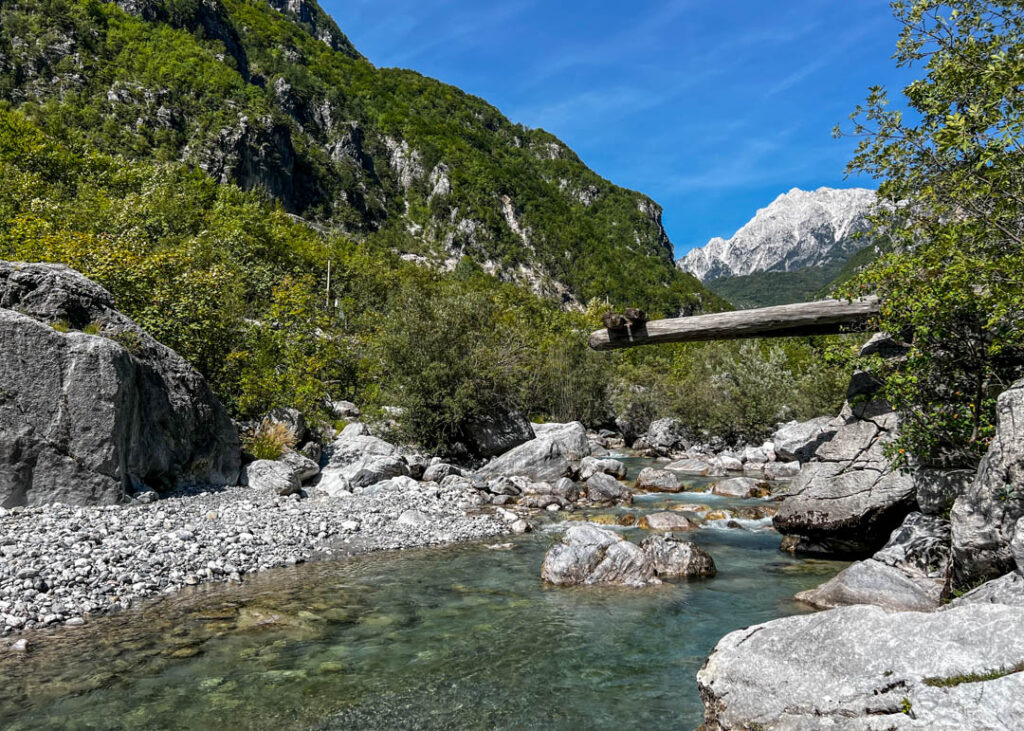
Early afternoon, we reached the first bridge crossing the river and with it the first sign of tourism. Some riverside chalets, wooden lounge chairs, and a sign saying something about agritourism… this seemed like the perfect place for nature lovers to get away from it all (and indulge in the cold plunge trend in gorgeous surroundings!).
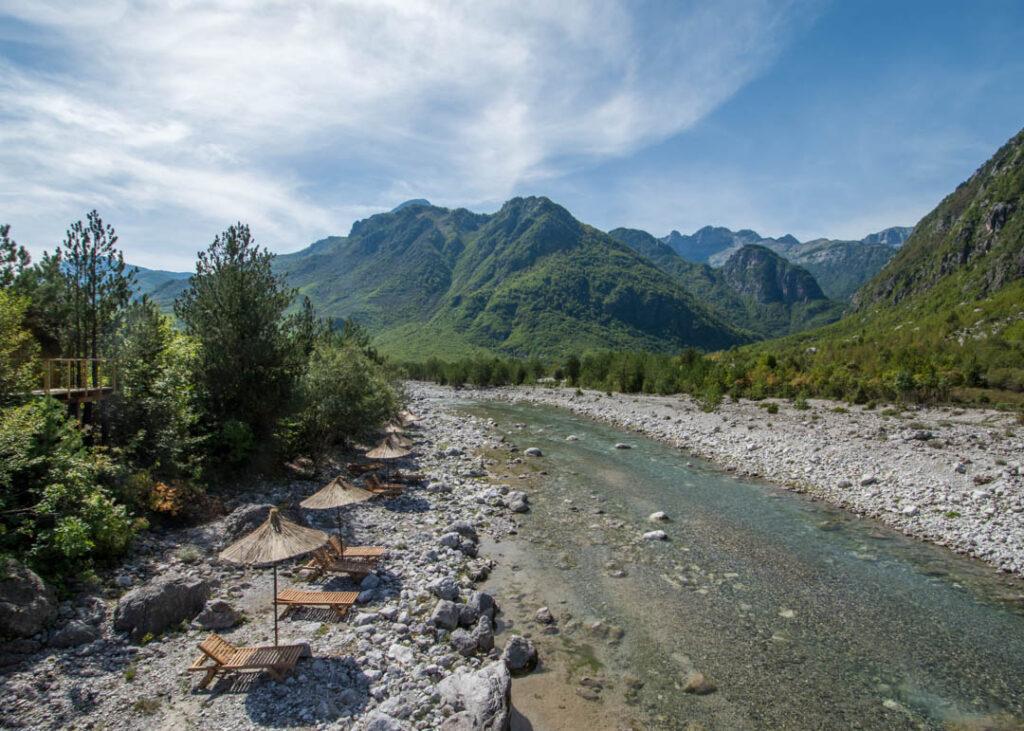
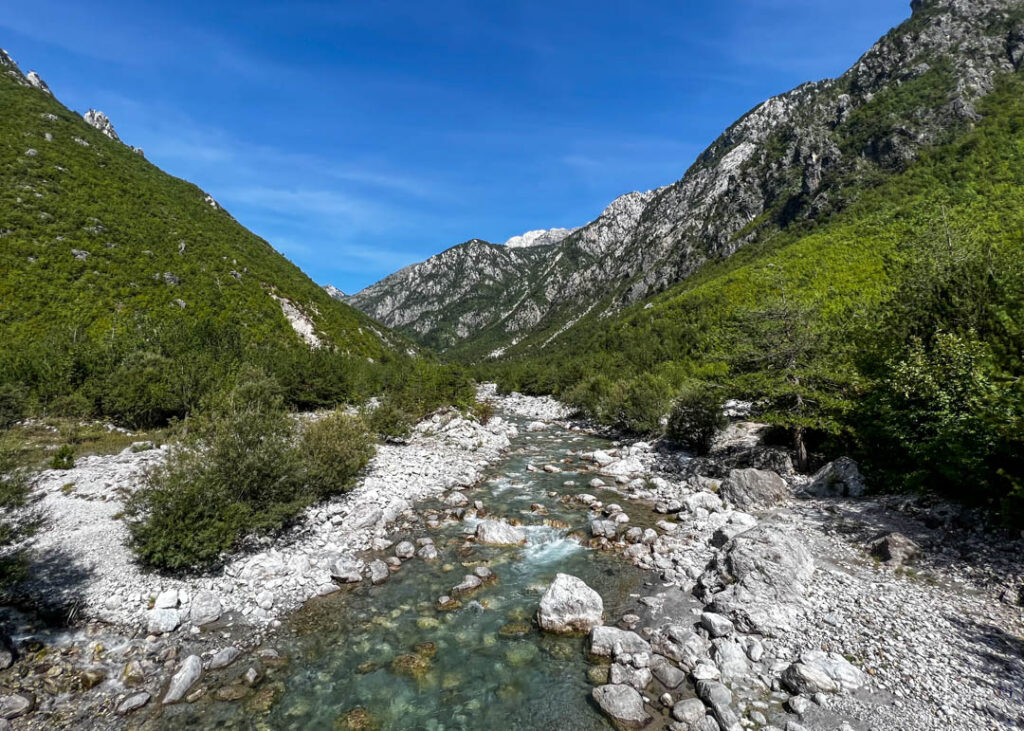
Finally on the other side, our “leisure” day continued as we reached the picturesque hamlet of Nderlysaj.
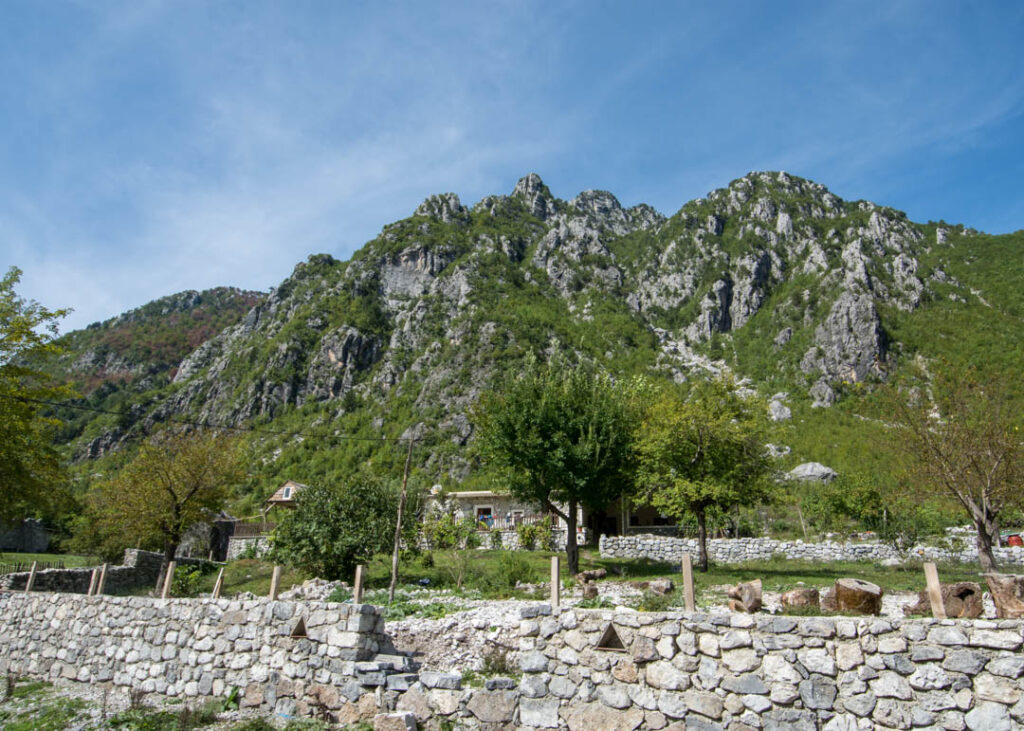
We checked into our guest house to rest before our final ascent tomorrow, settling in for a beer or two in the expansive garden and carb-loading on sweet cakes.
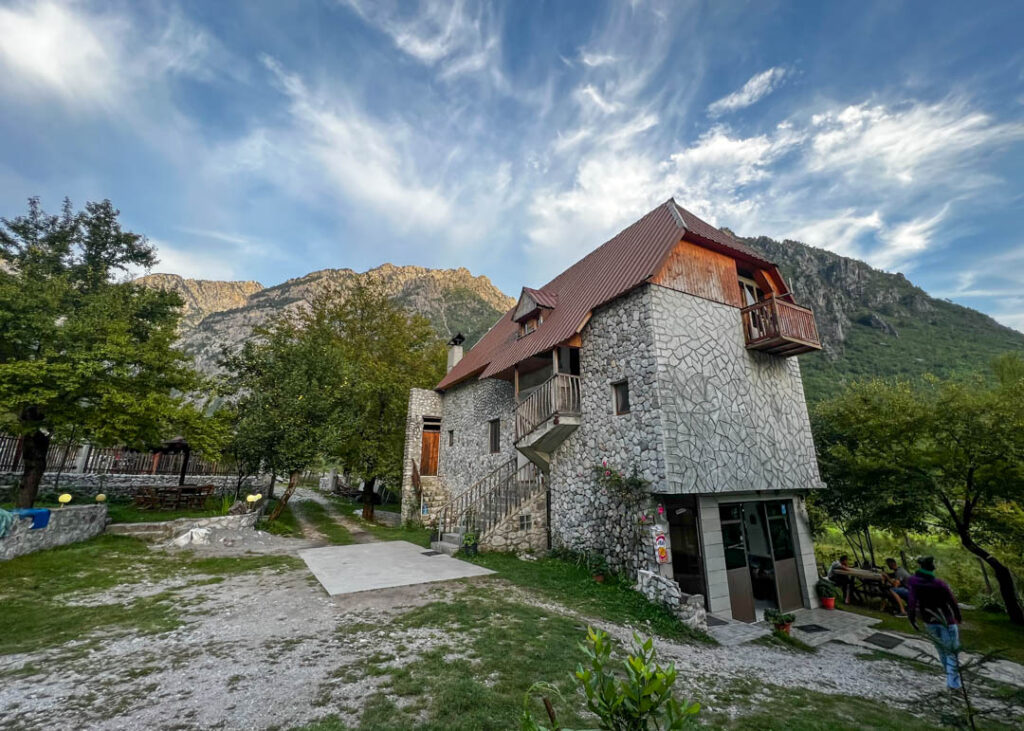
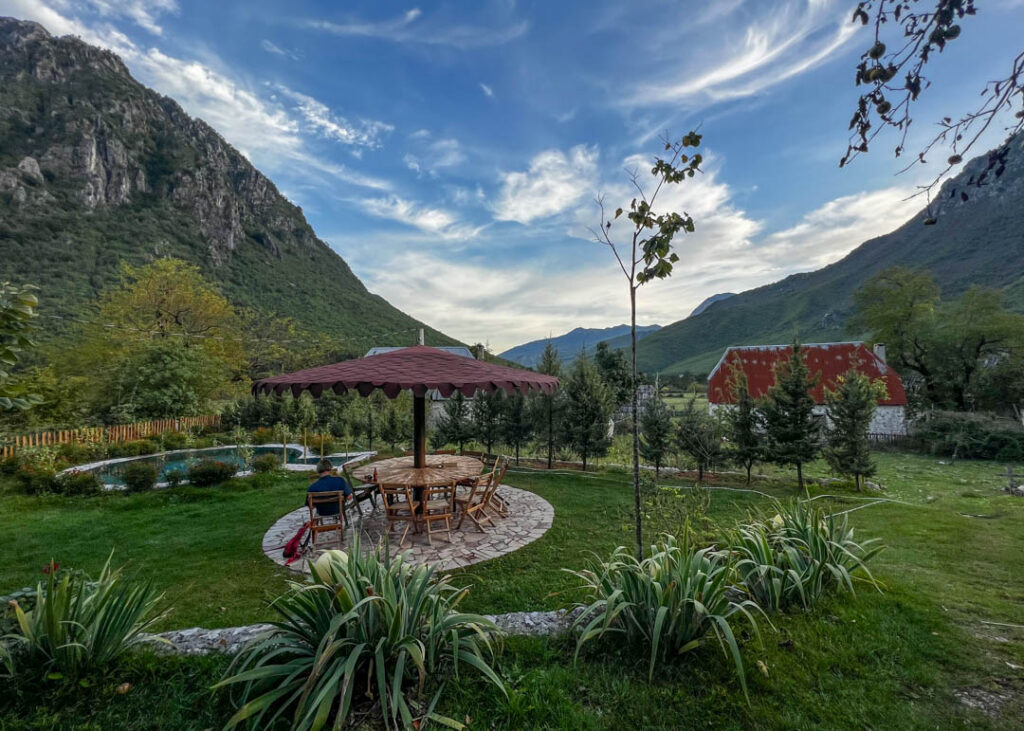
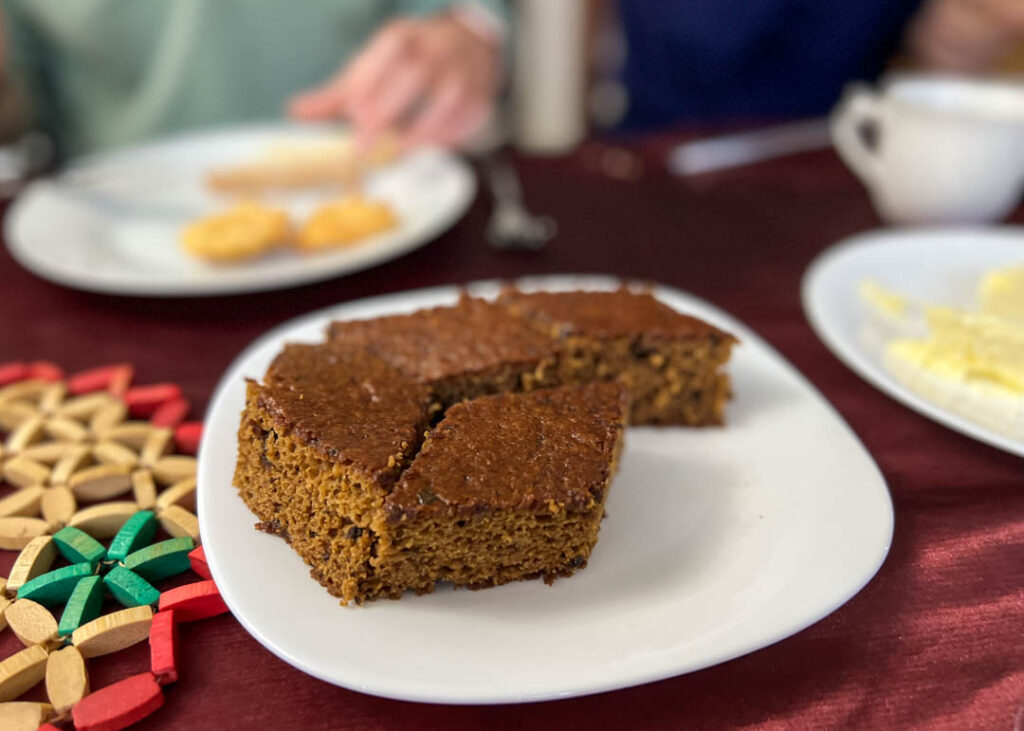
We took off early the next morning before the sun could warm up the valley, on our way to the butt-kicker of the week.
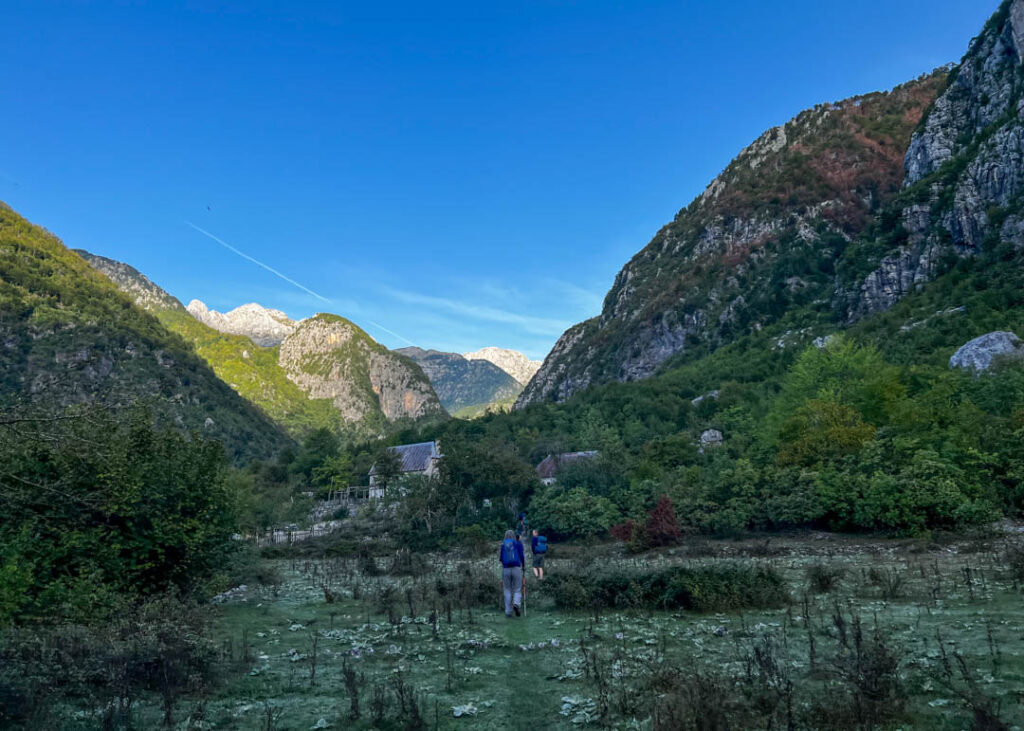
Following the Krapea creek, we got a nice surprise at the sight of the Ndërlysa’s marble pools. The stunning white rock formations have been chiseled by the water over centuries, creating mini pools of the clearest turquoise.
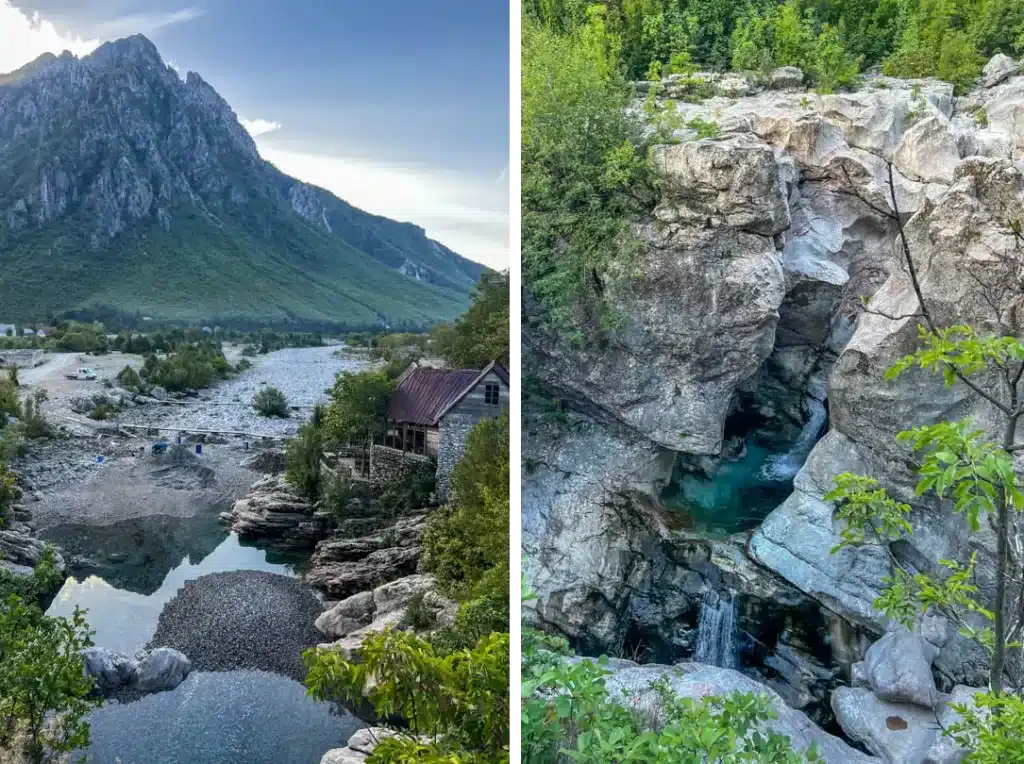
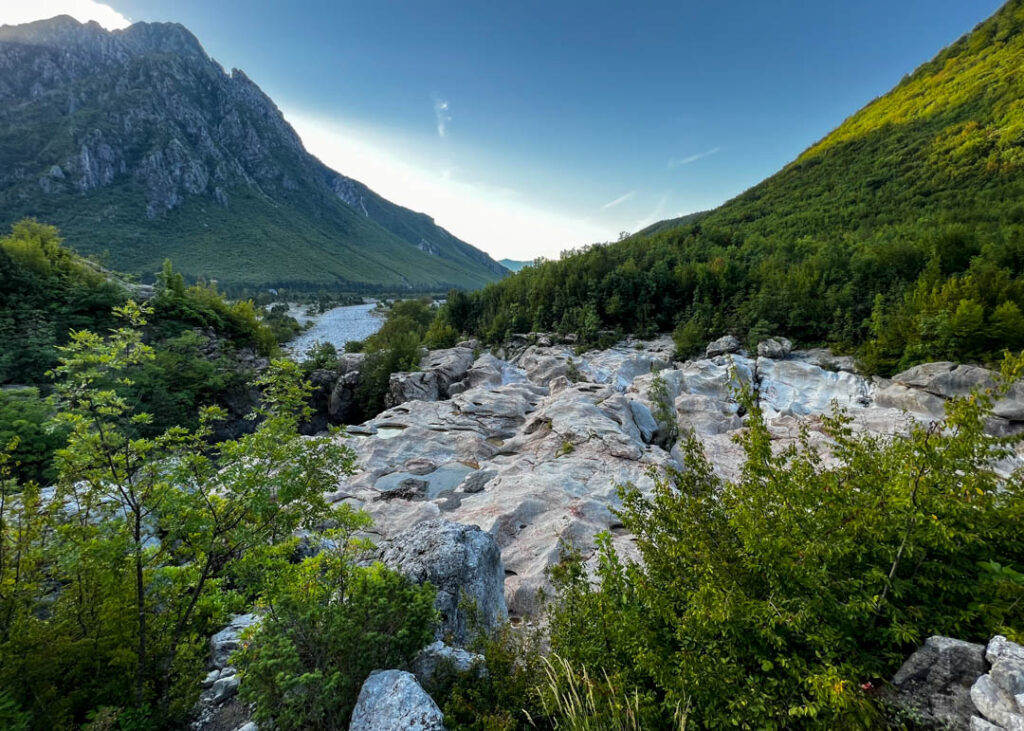
We continued going up through forests and pastures, crossing a few more streams but without dipping our toes this time as we knew the hard climb was yet to come.
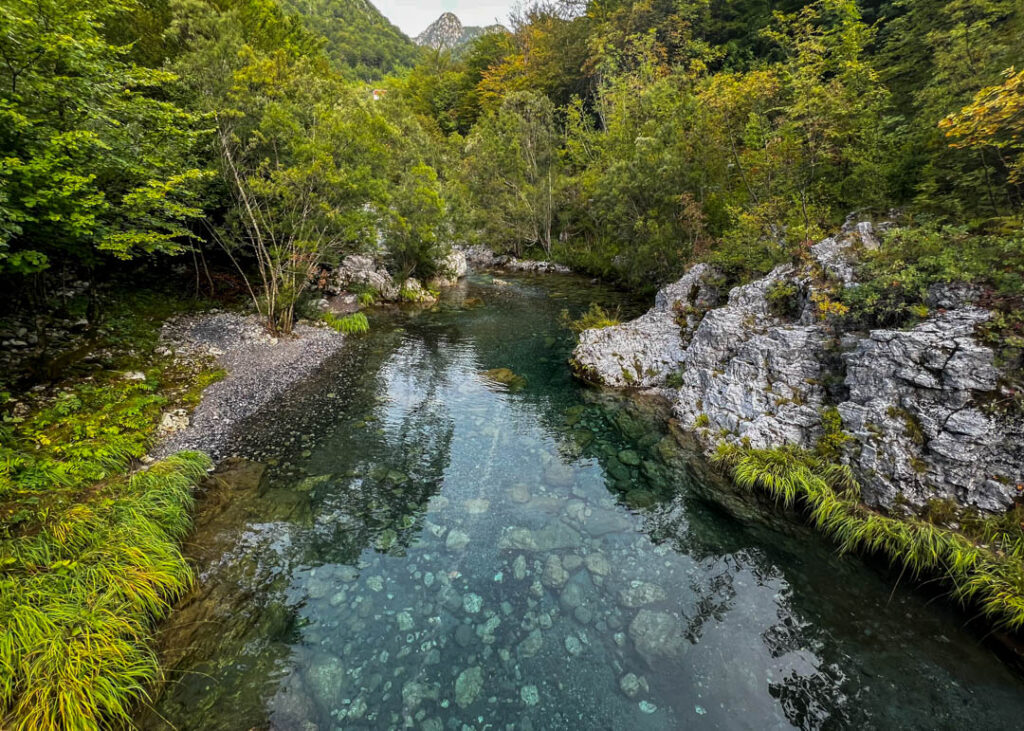
An hour later, we arrived at surprise #2 – the Blue Eye.
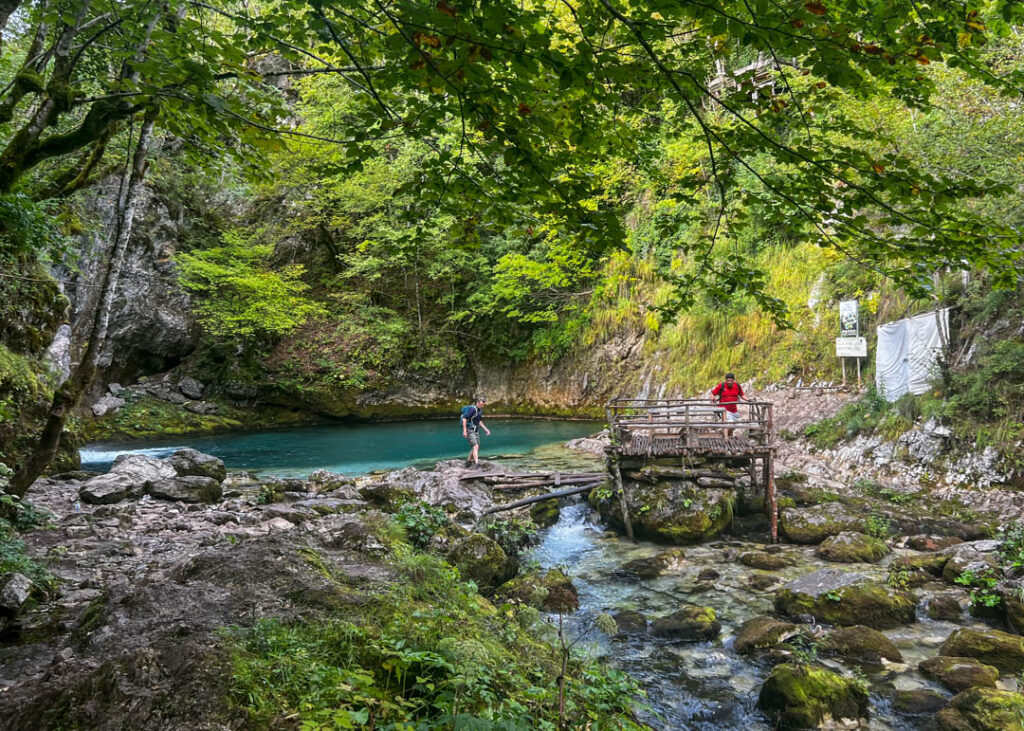
Not to be confused with the other, more famous Blue Eye in the south of Albania in Saranda, the “Theth Blue Eye” is yes another pretty turquoise pool but this one has a towering waterfall that flows right into it. It’s beautiful especially seen from above and incredibly cold so only the bravest will attempt to dip a tiny body part before skipping away screaming.
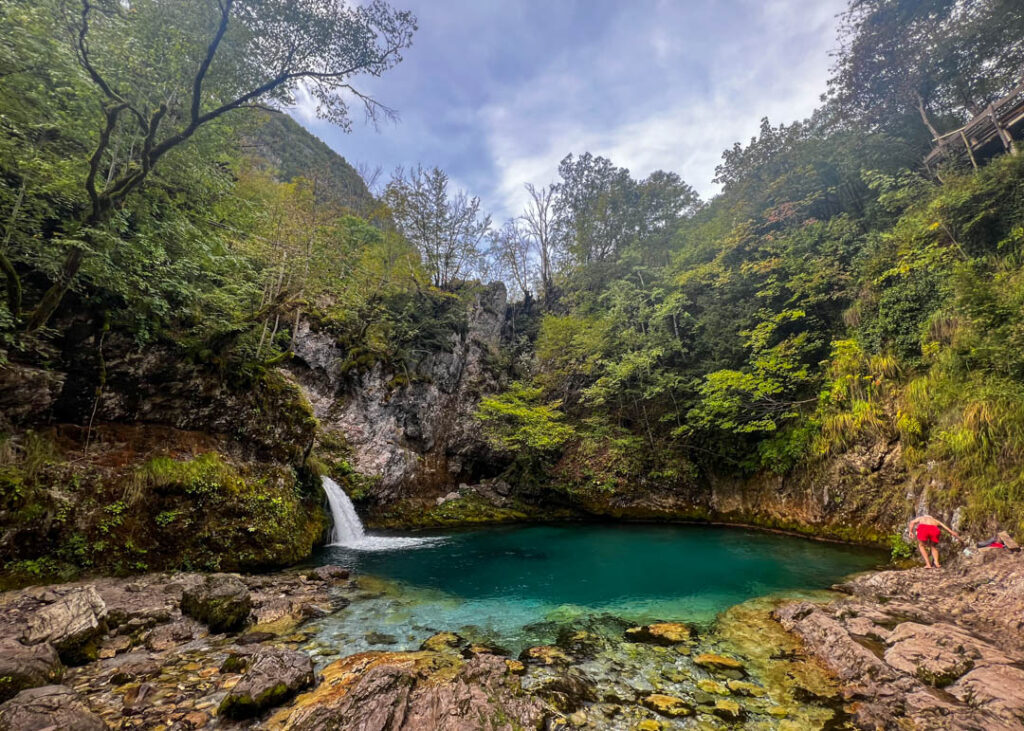
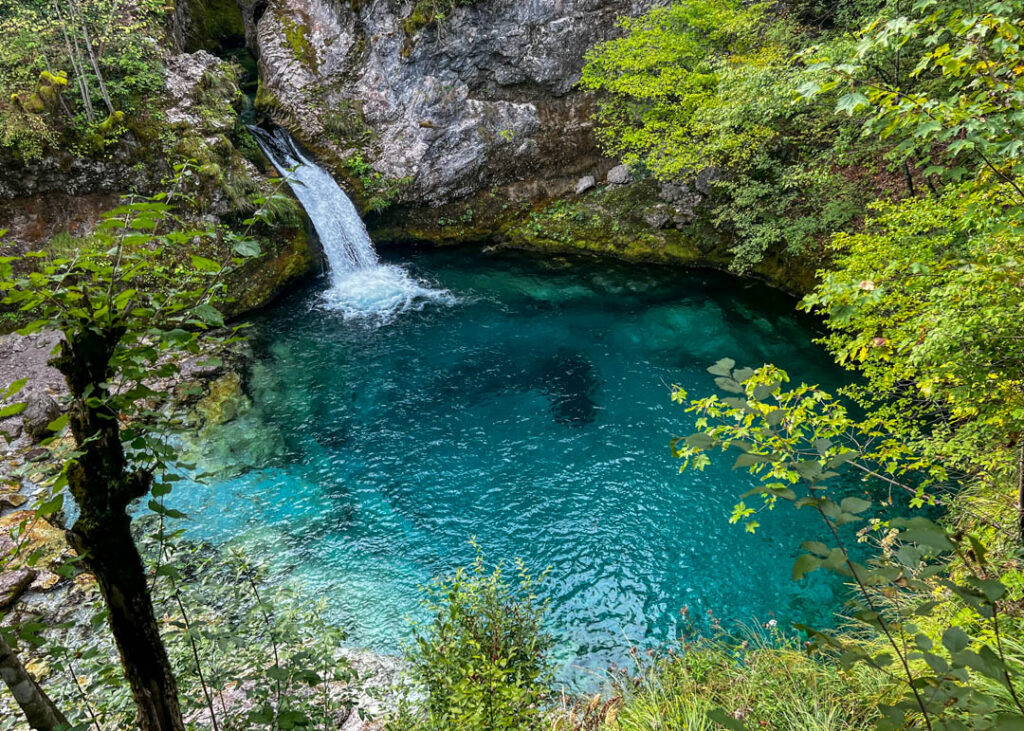
Soon after, the unrelenting climb to reach the 1,685m-high Thore pass began . It wasn’t that difficult but felt like a never-ending Stairmaster workout. Deep in the forested slopes of the mountain, there were practically no views to take the mind off your burning calves. First distraction we saw was an old grave so we cheered up big time when the trees finally cleared for a moment and we were able to see the valley from where we had just come that morning…
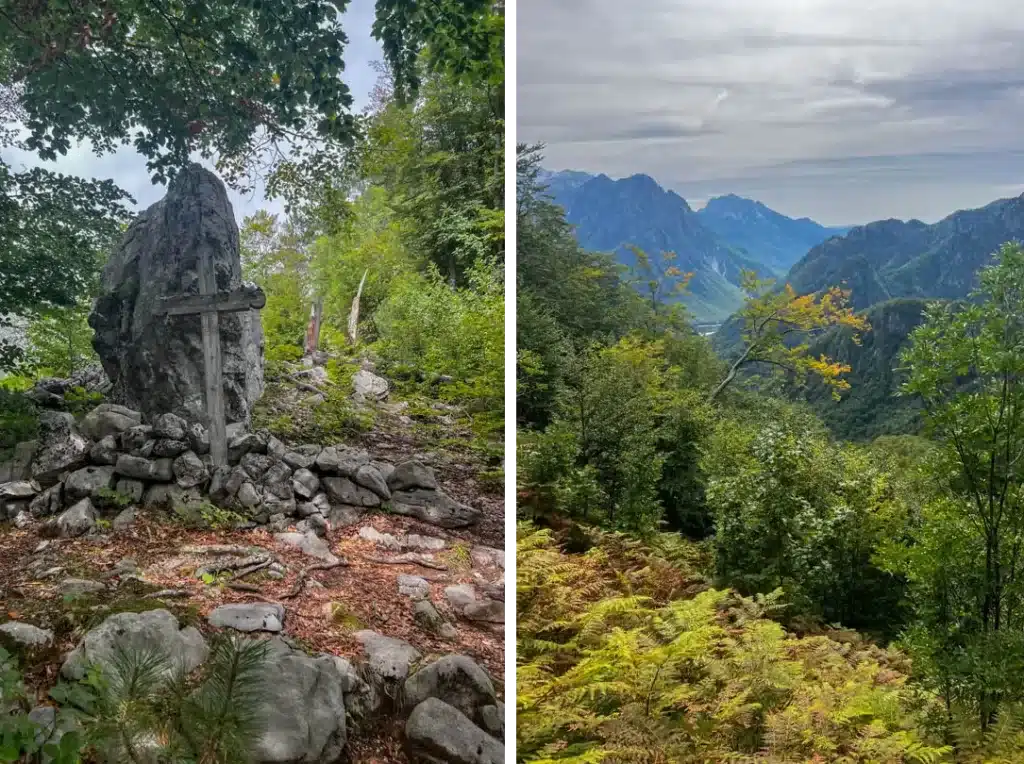
The end in sight, we pushed without a pause to the top of Thore Pass (which you can also reach by car but where’s the fun in that!).
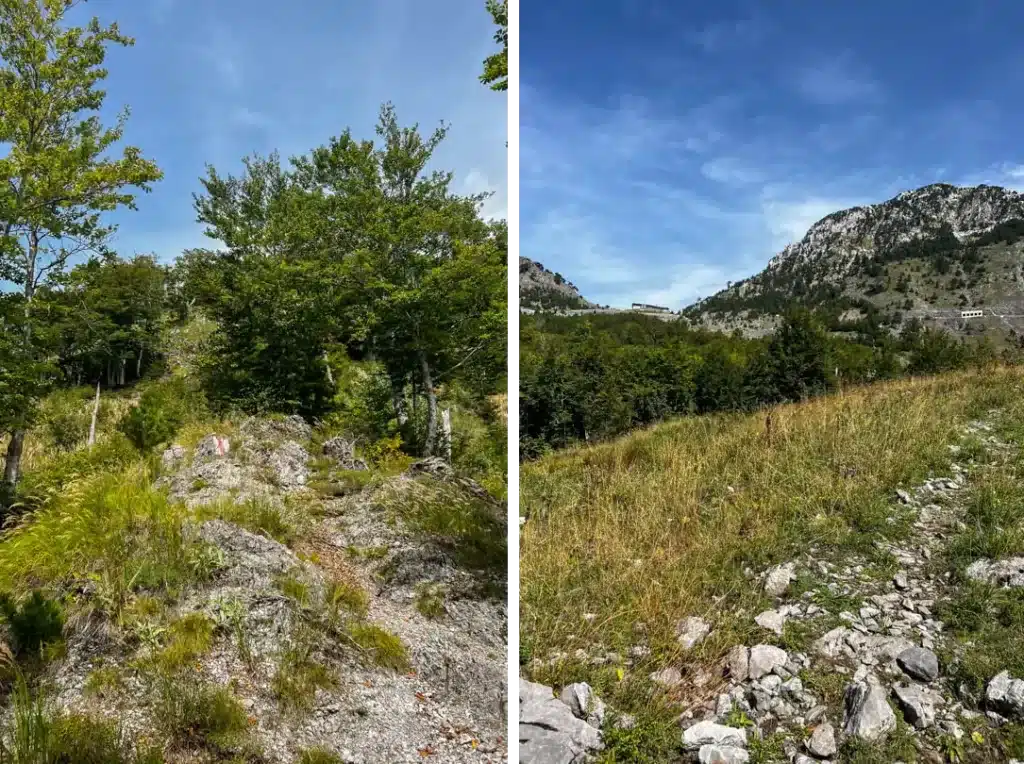
We finally made it (and crushed it frankly as it wasn’t even noon) and could catch our breath as we admired the views. Not as spectacular as the Valbona Pass but a nice crowning achievement nevertheless. Time for a long and well-deserved lunch before driving the scenic route to Krujë, passing through the Boga Valley.
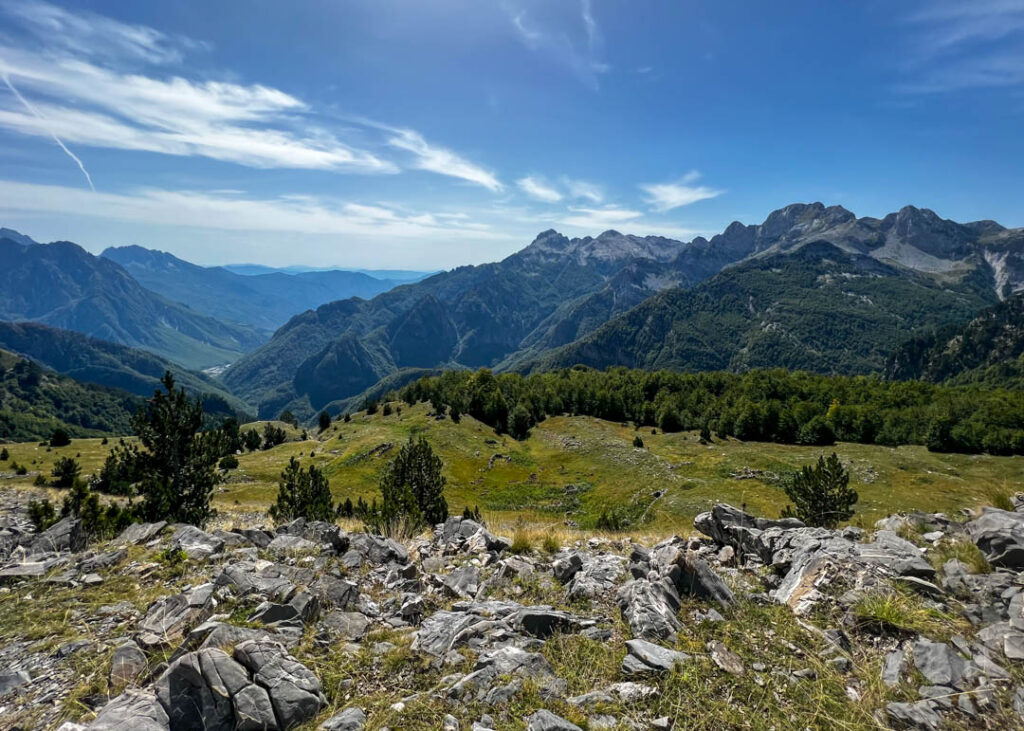
Sitting on a mountaintop just north of Tirana, the small city of Krujë (or Kruja) became the symbol of resistance against the Ottoman in the 15th century.
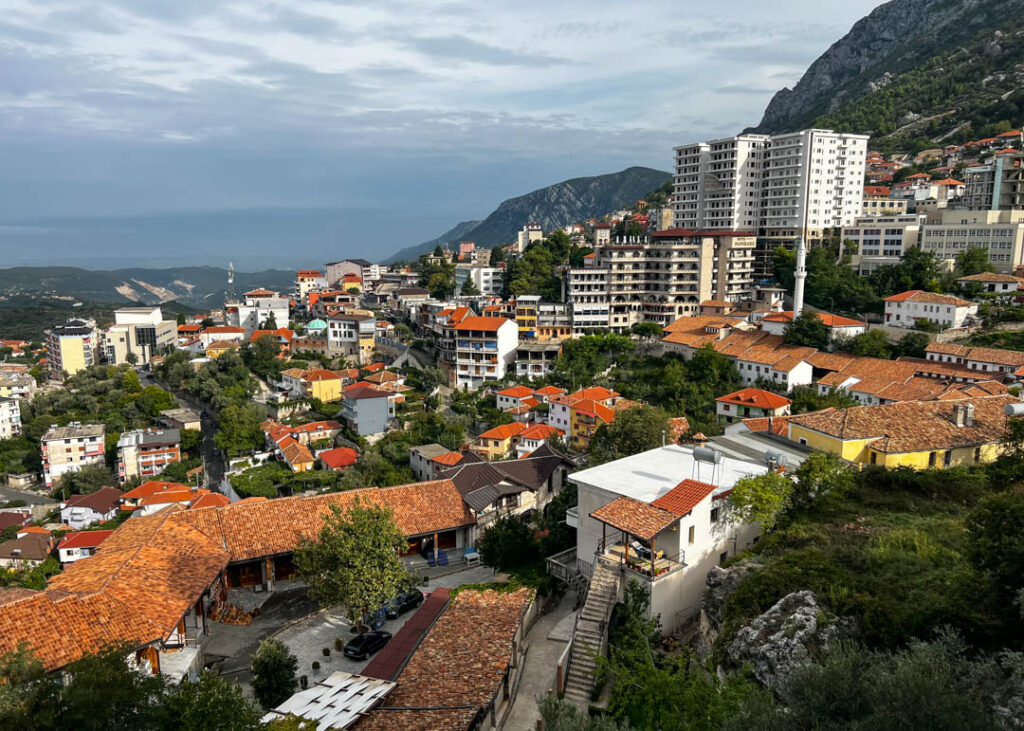
Perched above the city, the Krujë castle was the headquarters of Albania’s national hero Skanderbeg (then an Albanian nobleman and military commander) who led a rebellion against the Ottoman Empire. The castle fought off multiple massive sieges from the Turks under his command while Constantinople and large areas of the Balkans were falling. Today it contains a museum dedicated to this legendary Albanian leader, chronicling his life and one of the proudest periods of Albanian history.
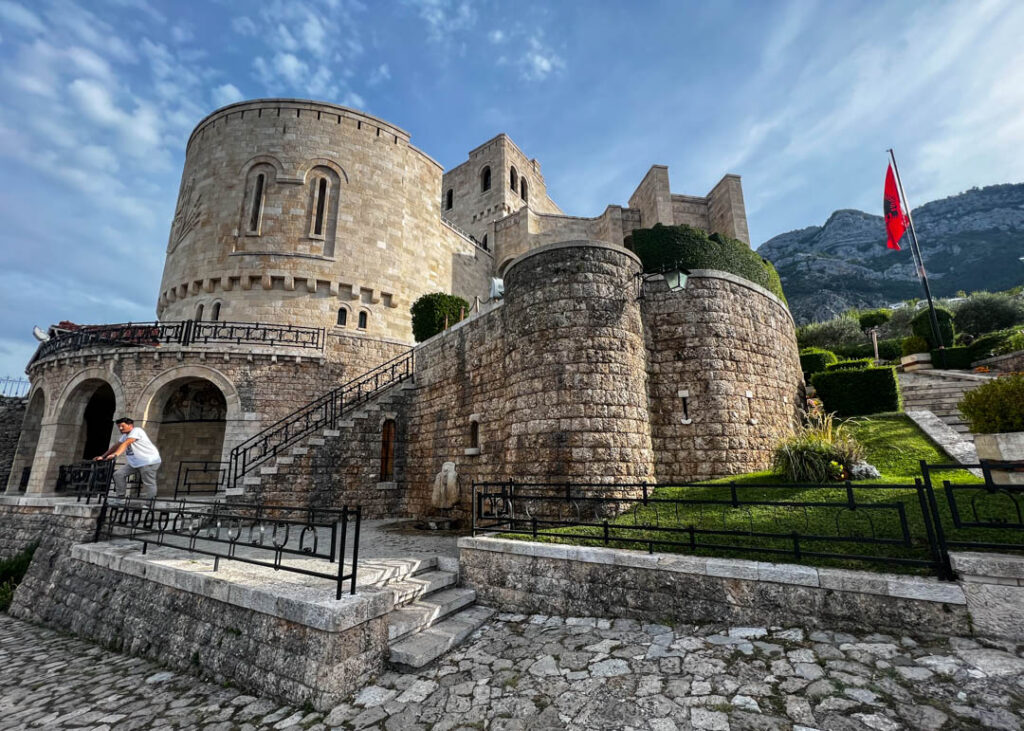
You can also see the remains of an Ottoman-era mosque and its minaret in front of the castle, named after the man who finally broke down the castle’s security – Sultan Mehmed Fatih.
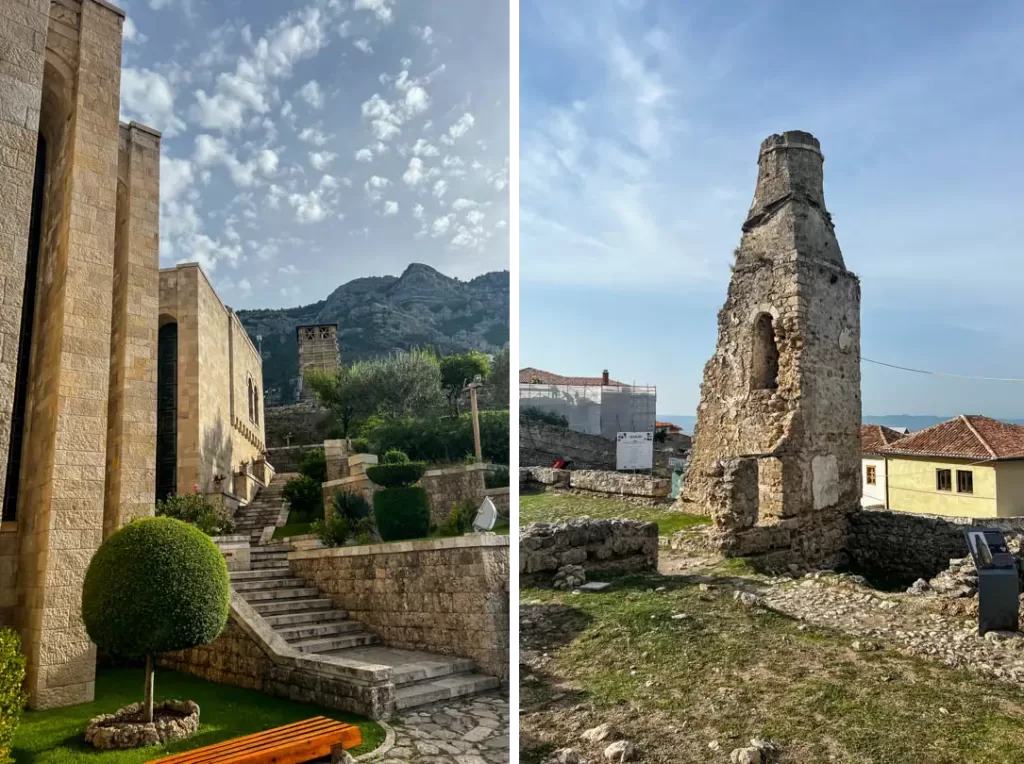
The way up to the castle is equally historic as you walk through a 450-year-old bazaar selling traditional crafts and antiques.
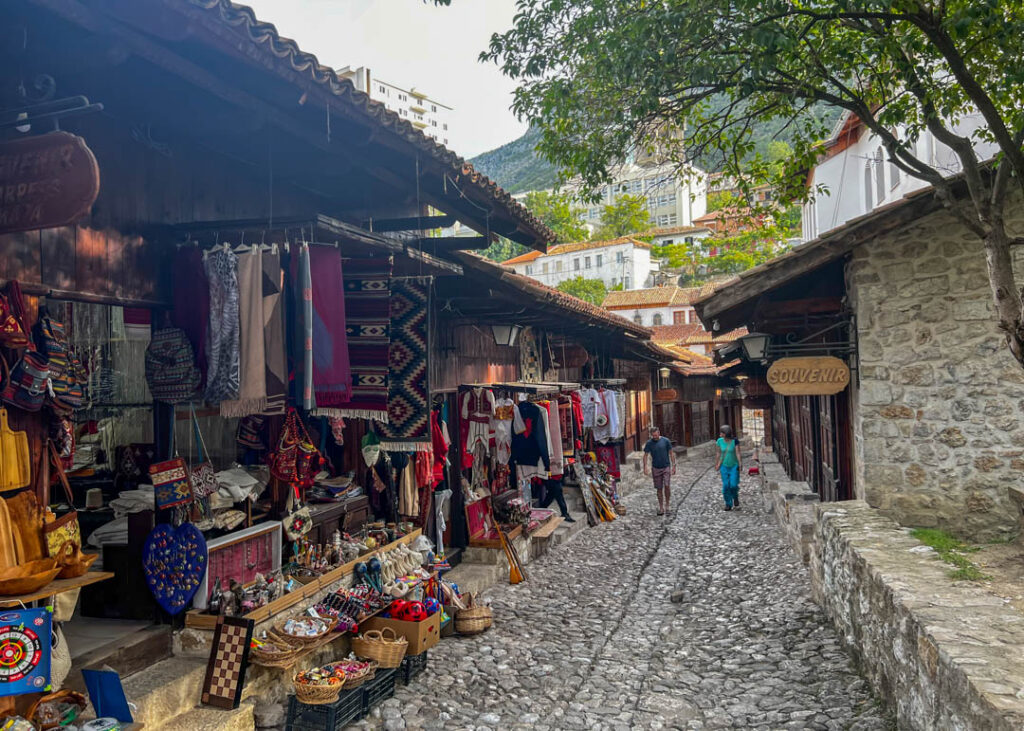
With a view as fitting as its name, we ended our adventure at Hotel Panorama with a final traditional meal and an abundance of strong Albanian red wine. We needed to celebrate our steep morning hike and tomorrow’s lack of physical activity save for carrying our gear to the airport…
